About those "catch cans"
#31
Well, I clearly don't agree. Eco Tuner plays on fear and ignorance to sell snake oil. He tries to convince eco owners that an imaginary issue exists, so he can then sell something costing hundreds of dollars.
Last edited by tamnalan; 07-25-2014 at 01:51 PM.
#32
Senior Member
If you don't want one, don't buy one. You don't really care about his profit margin, you're just trying to pick a fight.
The following users liked this post:
Grizz12 (06-11-2022)
#33
Do not start the arguing. This is your warnings.
#36
Drop it.
#37
Nice day today....little warm but still nice.
#38
Eco Tuner - I've read your info and others in great detail already. Forgive me for "skimming" today's posts. I do believe you mentioned something about pictures showing an engine that's had a can on it for 68k miles? If so - I don't see the pics. But that is the type of info I'm looking for.
I understand the theory and science behind it for the most part. I want to see a side by side comparison of an Eco Boost engine that was new or just cleaned - with x amount of miles on it and no catch can, and an Eco Boost engine that was new or just cleaned with a catch can and the same amount of miles.
I want to see boroscopes from 2 Eco's that were "clean" to begin with - 1 with a can & 1 without - and both vehicles at the same mileage interval.
I understand the theory and science behind it for the most part. I want to see a side by side comparison of an Eco Boost engine that was new or just cleaned - with x amount of miles on it and no catch can, and an Eco Boost engine that was new or just cleaned with a catch can and the same amount of miles.
I want to see boroscopes from 2 Eco's that were "clean" to begin with - 1 with a can & 1 without - and both vehicles at the same mileage interval.
Good question. This is how the thread should move forward....no fighting and bashing, actual pictures and true life experiences. The links I provided show several EB's the owners or Ford techs have taken pics w/boroscope, but here are the ones your asking for:
Forgive some are not the best clarity due to boroscope image:
55k miles, no catchcan:
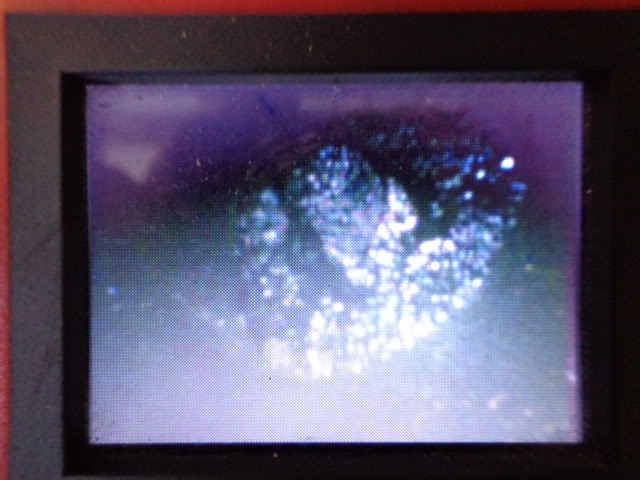
40k miles no catchcan disasembleled to do valve job as guides had worn to excess tolerances:
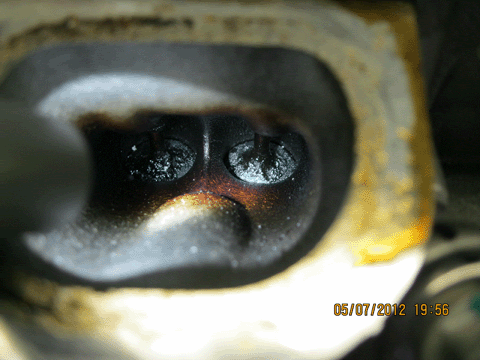
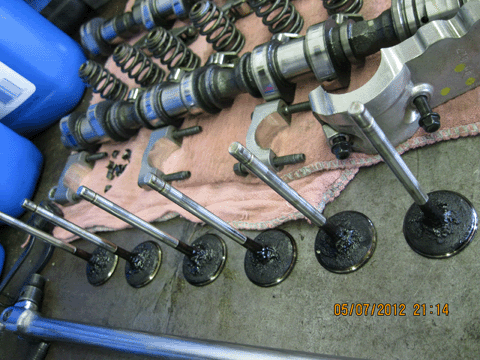
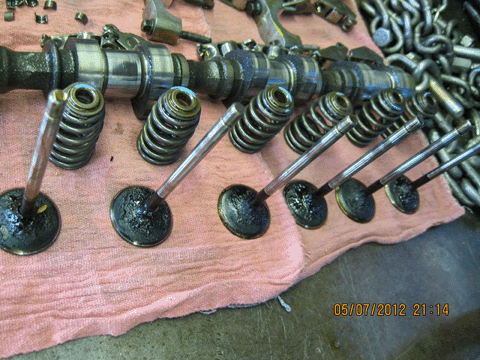
the 3 above are the same engine tore down taken from internal factory TSB on the issue.
Now the 68k miles from new w/RX system installed:
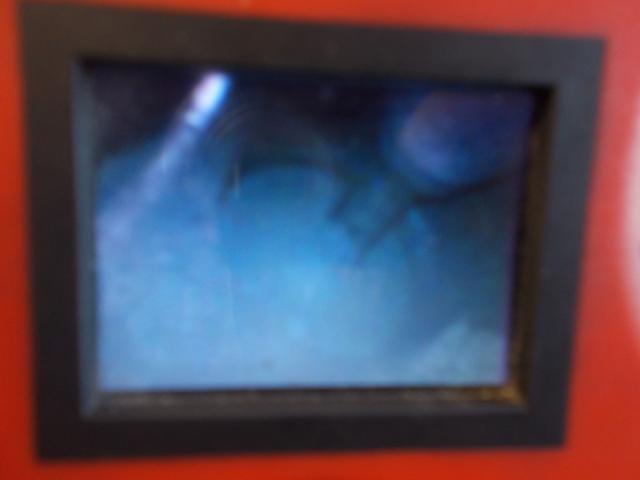
Note, the one with the RX can installed still has a slight amount of coating, but none of the buildup to negatively effect the volunteerism efficiency of the port and valve design. This is the highest mileage test to date, and it has taken 4 years to get to this....but we are still monitoring the same vehicle (we started several, but every other one has since been traded or sold so we could not follow them).
Here is the same V6 the year before DO was implemented with 114k miles as you can see the port injectors keep the valves deposit free with the constant showering of detergent fuel:
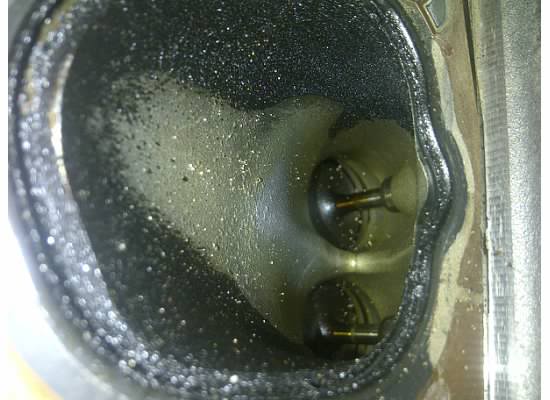
The following users liked this post:
Grizz12 (06-11-2022)
#39
PLEASE ERAD in detail, as this is maybe the most telling in depth study done to date:
And an important industry study with dyno graphs documenting the degradation in power as the coking built up:
Known Problems
A U.S. patent application filed in 2002 by Volkswagen AG explains the DI-engine carbon-deposit dilemma this way: “Gasoline engines with direct injection of the fuel into the combustion chamber…suffer especially from the problem of the formation of carbon deposits…especially in the neck region of the intake valves.”
The document describes these deposits as a sticky coating of oil and fuel constituents that, once formed, serves as a base for further deposits, creating “a circular process, by which the coating thickness of the carbon deposits continuously increases.” Excessive carbon deposits “have extremely negative effects,” the patent application concludes, citing significant performance losses, sporadic ignition failures and, potentially, holes burned in the structure of the catalytic converter (should bits of carbon break from the valves and pass though the combustion chamber).
Ameer Haider, GM’s assistant chief engineer for V6 engines, certainly knows the problem, tellingAutoObserver, “DI engines are prone to forming oily deposits on the intake valves, unlike in port fuel-injected engines, where a constant spray of fuel into the port allows any deposits to wash away. With DI engines, the fuel gets injected directly into the combustion chamber, so there isn't a chance for the deposits to wash away. Typically, deposits form when soot – which is an end-product of combustion – adheres to the valve stem.”
The main purpose of VW’s patent application was to propose a fix for DI engine carbon deposits: specifically, applying “a catalytic surface” to the engine valves that “counteracts the formation of carbon deposits.” But nearly 10 years later, there’s ample evidence that this and other potential solutions have failed.
Constantine Boyadjiev works as a risk management officer at a financial firm in New York and has been an auto enthusiast for most of his life. In 2008, he decided it was time to part with his beloved 2001 BMW M5, mainly due to escalating maintenance costs – but also because he discovered that a number of fellow owners were dealing with expensive-to-fix carbon build-up in their vehicles’ engine cylinder heads.
And an important industry study with dyno graphs documenting the degradation in power as the coking built up:
Known Problems
A U.S. patent application filed in 2002 by Volkswagen AG explains the DI-engine carbon-deposit dilemma this way: “Gasoline engines with direct injection of the fuel into the combustion chamber…suffer especially from the problem of the formation of carbon deposits…especially in the neck region of the intake valves.”
The document describes these deposits as a sticky coating of oil and fuel constituents that, once formed, serves as a base for further deposits, creating “a circular process, by which the coating thickness of the carbon deposits continuously increases.” Excessive carbon deposits “have extremely negative effects,” the patent application concludes, citing significant performance losses, sporadic ignition failures and, potentially, holes burned in the structure of the catalytic converter (should bits of carbon break from the valves and pass though the combustion chamber).
Ameer Haider, GM’s assistant chief engineer for V6 engines, certainly knows the problem, tellingAutoObserver, “DI engines are prone to forming oily deposits on the intake valves, unlike in port fuel-injected engines, where a constant spray of fuel into the port allows any deposits to wash away. With DI engines, the fuel gets injected directly into the combustion chamber, so there isn't a chance for the deposits to wash away. Typically, deposits form when soot – which is an end-product of combustion – adheres to the valve stem.”
The main purpose of VW’s patent application was to propose a fix for DI engine carbon deposits: specifically, applying “a catalytic surface” to the engine valves that “counteracts the formation of carbon deposits.” But nearly 10 years later, there’s ample evidence that this and other potential solutions have failed.
Constantine Boyadjiev works as a risk management officer at a financial firm in New York and has been an auto enthusiast for most of his life. In 2008, he decided it was time to part with his beloved 2001 BMW M5, mainly due to escalating maintenance costs – but also because he discovered that a number of fellow owners were dealing with expensive-to-fix carbon build-up in their vehicles’ engine cylinder heads.
#40
When Boyadjiev replaced his BMW with a barely-used 2008 Audi RS 4, he thought he had put all worry about carbon build-up behind him. But, as he said, “Little did I know that there was a much uglier carbon-build-up problem awaiting me.” Boyadjiev became involved with the online RS 4 owner community when he was searching for his car, in particular a group of veteran Audiworld.com members who later migrated to QuattroWorld.com. He kept active with the group as he took delivery of the car and enjoyed the first few months of ownership. Not long after, though, he was dismayed to see that “the message boards caught fire with plenty of formally documented cases” of carbon build-up with fellow RS 4 owners’ engines.
Boyadjiev admits to some initial “wishful thinking” that perhaps the problem might only affect earlier production models or that the forum members were merely trumpeting an isolated issue. But then, despite his own “religious” maintenance practices, including using only 93-octane premium fuel and avoiding short, in-town trips that failed to bring the engine up to proper operating temperatures, it soon was apparent his Audi’s 4.2-liter direct-injected V8 also was plagued by carbon buildup.
“The loss of performance became very noticeable over time,” he says. He decided to document it, taking the car to a local automotive performance specialist in nearby Stamford, Connecticut, to have its power measured by a dynamometer.
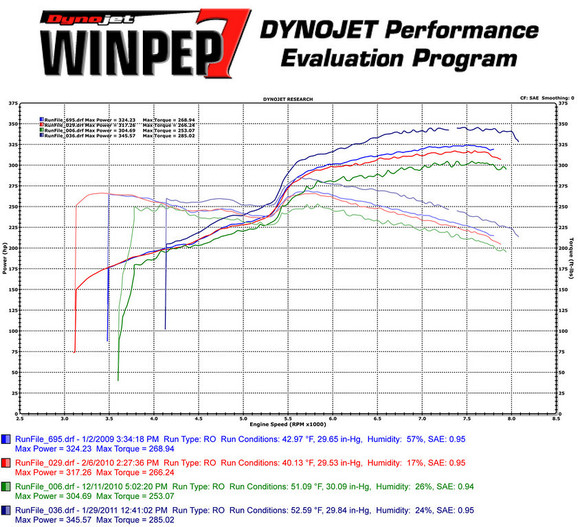
At its first measurement, Boyadjiev’s RS 4 had 15,000 miles and produced 324 all-wheel horsepower, measured at the wheels (AWHP). Roughly one year and 5,000 miles later, the same test showed 317 AWHP. After another year and 5,000 miles, power was down to 305 AWHP. Power from the 4.2-liter V8 had degraded by almost 5 percent in just 10,000 miles.
Considering the RS 4’s performance pedigree – and correspondingly large price tag (in excess of $70,000 MSRP) – this was an alarming trend, something Boyadjiev thought Audi would want to address head-on, especially since parent company VW had earlier documented these very issues in its DI engines. But Boyadjiev and his fellow RS 4 owners found Audi quick to dismiss the issue as a byproduct of poor-quality U.S. gasoline and American-style driving habits (i.e. the absence of high-speed runs on the Autobahn). Audi offered no assistance.
So Boyadjiev took an action to which many other RS 4 owners already had resigned themselves: he had an independent mechanic disassemble the engine and clean it – a $1,200 expense at the time. He returned to the dynamometer to see if the cleaning had made any difference. It had. Engine output soared by 41 AWHP and the car felt new again. For the moment, at least.
Boyadjiev said he is prepared to pay for such a maintenance cleaning every 10,000 miles. And while he is certainly not happy about that, he’s willing to endure the hassle and cost. “The car is so rewarding and a joy to drive,” he says. He is far less complimentary about Audi’s response to the issue. Despite the evidence Boyadjiev and many of his fellow RS 4 forum members have presented, “the company continues to deny this is a very serious issue,” he said. “I have very little respect for a company that refuses to stand behind its name, especially when professing a motto of ‘Progress through Technology,’” he added. And experiences like Boyadjiev’s are not uncommon.
A Google search for “direct injection carbon build up” reveals a flood of owner complaints about the issue across vehicle brands and models, including particularly active threads for the VW GTI, the Lexus IS 250, and a variety ofAudi models in addition to the RS 4.
All Engines Not Designed Equally
Many automakers’ gasoline DI engines do not appear to exhibit any carbon build-up issues at all, however. Digging into online threads about Cadillac’s 3.6-liter DI V6 in its popular CTS lineup does reveal some owner concerns about carbon build-up, but it’s difficult to find even a single report that any build-up has actually occurred – a record that is notable considering that Cadillac has sold more than 200,000 CTS models with DI V6s (Audi sold fewer than 2,000 RS 4s in the US during its two-year sales run).
Haider, GM’s V6 assistant chief engineer, explained how GM has designed its DI engines to combat carbon buildup: “We maintain great engine function and performance in our all our DI engines through an optimization strategy with our valve events,” he said. “Our intake-cam timing, injector targeting and timing of the injection events are optimized to avoid direct fuel contact on the intake valves. This strategy keeps smoke and soot formation to an absolute minimum, which in turn prevents excessive deposit formation.”
At the Detroit Auto Show in January, Ford was confident enough about its popular 3.5 liter EcoBoost direct-injection V6 to have technicians tear down an example engine that had accumulated the equivalent of 160,000 miles through an intentionally abusive regimen of log dragging, high-speed towing and desert racing. When they opened it up before a live audience, they found some light carbon deposits on the valves and pistons, but not enough to affect performance. In fact, the engine showed a loss of just one horsepower afterwards – roughly what Boyadjiev’s RS 4 engine lost every 500 miles.
Stephen Russ, technical leader for combustion for Ford’s 2-liter Duratec DI engine, said that similar to GM, engineers have determined the proper injection-timing calibration to help eliminate the carbon deposits. But Russ also said the technology of injection components – particularly the high-pressure solenoid injectors – has quickly matured, meaning excess valve deposits in most DI engines should become a thing of the past as these improved components are incorporated into production.
Tony Chick, principal engineer at European Performance Labs in Stratford, Connecticut, has made a career of repairing and rebuilding high-performance engines from Audi, Porsche AG and BMW, among others and his operation has garnered a reputation among car enthusiasts as a go-to place for cleaning DI engines that have become choked with carbon. Chick thinks the problem for most affected engines can be traced to the breathing system – specifically, the design of its crankcase ventilation and exhaust-gas recirculation components.
All modern gasoline engines return some crankcase and exhaust gases back through the intake manifold in order to help control emissions, but, according to Chick, some exhaust-gas recirculation designs are “dirtier" than others. Some, he said, are less-effective at preventing the passage of tiny bits of oil, carbon and other particulates that eventually get baked onto the intake ports and valves.
Another good question (thanks for keeping it on track).
This is one of the main misconceptions of what the PCV system does. It serves many critical functions, only 1 being EPA emissions related. If you just vent a crankcase, you are only relieving pressure and most of the damaging combustion byproducts are left to settle into the crankcase and mix with and contaminating the oil. You must have both a clean, or fresh side (EB is drivers side, 5.0 is as well) that brings in fresh, filtered air that replaces what the dirty, or foul side evacuates and removes. It also serves to flush the damaging compounds out with it. To understand the EB, it uses a NA designed PCV system, so when the turbos begin to make boost, the correct direction of flow, clean in drivers side, foul out passenger side, there is no intake manifold vacuum present to continue evacuating, or pulling these out the passenger side as they should. And as the turbos on the EB are so efficient and small, they spool up quickly so anything much above idle and there is no measurable vacuum present to keep the PCV valve open. It then closes, and there is no evacuation or flushing taking place. All engines have some blow-by, so pressure then starts to build (all the time the damaging compounds are still entering the crankcase but are now settling into the engine oil and rest of the crankcase) until it pushes backwards out the cleanside inlet, into the driverside turbo inlet pipe (this should never take place on a correctly functioning PCV system), where this mix of water, unburnt fuel, sulfuric acid, abrasive soot and carbon particles begin to condense and hit the turbine blades (can damage them) and further into the CAC where they cool, and condense and accumulate as this mess of gunk:
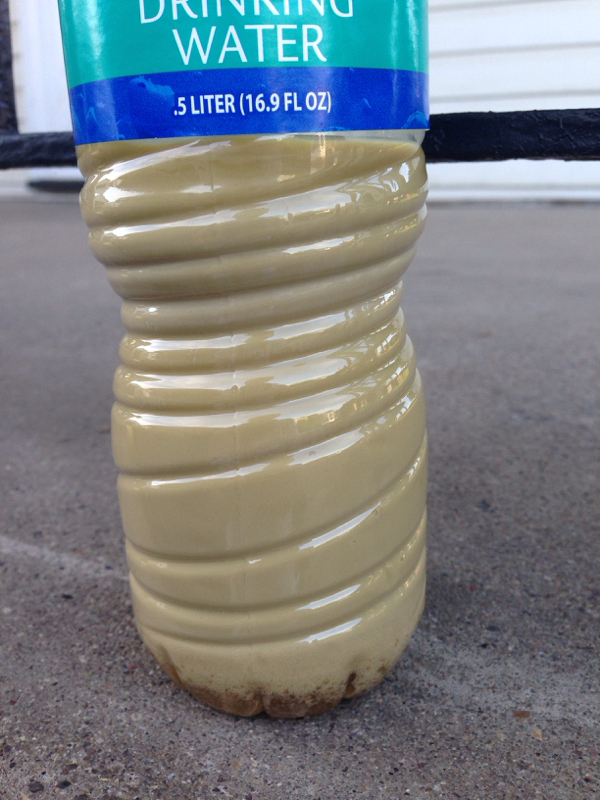
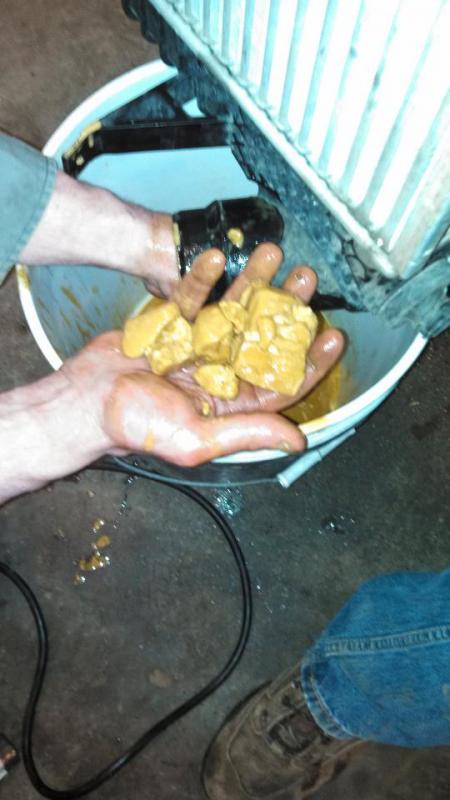
Note, the chunks are in cold winter when far more water vapor is released during the intense heat and pressure of the combustion process).
Boyadjiev admits to some initial “wishful thinking” that perhaps the problem might only affect earlier production models or that the forum members were merely trumpeting an isolated issue. But then, despite his own “religious” maintenance practices, including using only 93-octane premium fuel and avoiding short, in-town trips that failed to bring the engine up to proper operating temperatures, it soon was apparent his Audi’s 4.2-liter direct-injected V8 also was plagued by carbon buildup.
“The loss of performance became very noticeable over time,” he says. He decided to document it, taking the car to a local automotive performance specialist in nearby Stamford, Connecticut, to have its power measured by a dynamometer.

At its first measurement, Boyadjiev’s RS 4 had 15,000 miles and produced 324 all-wheel horsepower, measured at the wheels (AWHP). Roughly one year and 5,000 miles later, the same test showed 317 AWHP. After another year and 5,000 miles, power was down to 305 AWHP. Power from the 4.2-liter V8 had degraded by almost 5 percent in just 10,000 miles.
Considering the RS 4’s performance pedigree – and correspondingly large price tag (in excess of $70,000 MSRP) – this was an alarming trend, something Boyadjiev thought Audi would want to address head-on, especially since parent company VW had earlier documented these very issues in its DI engines. But Boyadjiev and his fellow RS 4 owners found Audi quick to dismiss the issue as a byproduct of poor-quality U.S. gasoline and American-style driving habits (i.e. the absence of high-speed runs on the Autobahn). Audi offered no assistance.
So Boyadjiev took an action to which many other RS 4 owners already had resigned themselves: he had an independent mechanic disassemble the engine and clean it – a $1,200 expense at the time. He returned to the dynamometer to see if the cleaning had made any difference. It had. Engine output soared by 41 AWHP and the car felt new again. For the moment, at least.
Boyadjiev said he is prepared to pay for such a maintenance cleaning every 10,000 miles. And while he is certainly not happy about that, he’s willing to endure the hassle and cost. “The car is so rewarding and a joy to drive,” he says. He is far less complimentary about Audi’s response to the issue. Despite the evidence Boyadjiev and many of his fellow RS 4 forum members have presented, “the company continues to deny this is a very serious issue,” he said. “I have very little respect for a company that refuses to stand behind its name, especially when professing a motto of ‘Progress through Technology,’” he added. And experiences like Boyadjiev’s are not uncommon.
A Google search for “direct injection carbon build up” reveals a flood of owner complaints about the issue across vehicle brands and models, including particularly active threads for the VW GTI, the Lexus IS 250, and a variety ofAudi models in addition to the RS 4.
All Engines Not Designed Equally
Many automakers’ gasoline DI engines do not appear to exhibit any carbon build-up issues at all, however. Digging into online threads about Cadillac’s 3.6-liter DI V6 in its popular CTS lineup does reveal some owner concerns about carbon build-up, but it’s difficult to find even a single report that any build-up has actually occurred – a record that is notable considering that Cadillac has sold more than 200,000 CTS models with DI V6s (Audi sold fewer than 2,000 RS 4s in the US during its two-year sales run).
Haider, GM’s V6 assistant chief engineer, explained how GM has designed its DI engines to combat carbon buildup: “We maintain great engine function and performance in our all our DI engines through an optimization strategy with our valve events,” he said. “Our intake-cam timing, injector targeting and timing of the injection events are optimized to avoid direct fuel contact on the intake valves. This strategy keeps smoke and soot formation to an absolute minimum, which in turn prevents excessive deposit formation.”
At the Detroit Auto Show in January, Ford was confident enough about its popular 3.5 liter EcoBoost direct-injection V6 to have technicians tear down an example engine that had accumulated the equivalent of 160,000 miles through an intentionally abusive regimen of log dragging, high-speed towing and desert racing. When they opened it up before a live audience, they found some light carbon deposits on the valves and pistons, but not enough to affect performance. In fact, the engine showed a loss of just one horsepower afterwards – roughly what Boyadjiev’s RS 4 engine lost every 500 miles.
Stephen Russ, technical leader for combustion for Ford’s 2-liter Duratec DI engine, said that similar to GM, engineers have determined the proper injection-timing calibration to help eliminate the carbon deposits. But Russ also said the technology of injection components – particularly the high-pressure solenoid injectors – has quickly matured, meaning excess valve deposits in most DI engines should become a thing of the past as these improved components are incorporated into production.
Tony Chick, principal engineer at European Performance Labs in Stratford, Connecticut, has made a career of repairing and rebuilding high-performance engines from Audi, Porsche AG and BMW, among others and his operation has garnered a reputation among car enthusiasts as a go-to place for cleaning DI engines that have become choked with carbon. Chick thinks the problem for most affected engines can be traced to the breathing system – specifically, the design of its crankcase ventilation and exhaust-gas recirculation components.
All modern gasoline engines return some crankcase and exhaust gases back through the intake manifold in order to help control emissions, but, according to Chick, some exhaust-gas recirculation designs are “dirtier" than others. Some, he said, are less-effective at preventing the passage of tiny bits of oil, carbon and other particulates that eventually get baked onto the intake ports and valves.
This is one of the main misconceptions of what the PCV system does. It serves many critical functions, only 1 being EPA emissions related. If you just vent a crankcase, you are only relieving pressure and most of the damaging combustion byproducts are left to settle into the crankcase and mix with and contaminating the oil. You must have both a clean, or fresh side (EB is drivers side, 5.0 is as well) that brings in fresh, filtered air that replaces what the dirty, or foul side evacuates and removes. It also serves to flush the damaging compounds out with it. To understand the EB, it uses a NA designed PCV system, so when the turbos begin to make boost, the correct direction of flow, clean in drivers side, foul out passenger side, there is no intake manifold vacuum present to continue evacuating, or pulling these out the passenger side as they should. And as the turbos on the EB are so efficient and small, they spool up quickly so anything much above idle and there is no measurable vacuum present to keep the PCV valve open. It then closes, and there is no evacuation or flushing taking place. All engines have some blow-by, so pressure then starts to build (all the time the damaging compounds are still entering the crankcase but are now settling into the engine oil and rest of the crankcase) until it pushes backwards out the cleanside inlet, into the driverside turbo inlet pipe (this should never take place on a correctly functioning PCV system), where this mix of water, unburnt fuel, sulfuric acid, abrasive soot and carbon particles begin to condense and hit the turbine blades (can damage them) and further into the CAC where they cool, and condense and accumulate as this mess of gunk:


Note, the chunks are in cold winter when far more water vapor is released during the intense heat and pressure of the combustion process).
The following users liked this post:
Wannafbody (07-25-2014)




